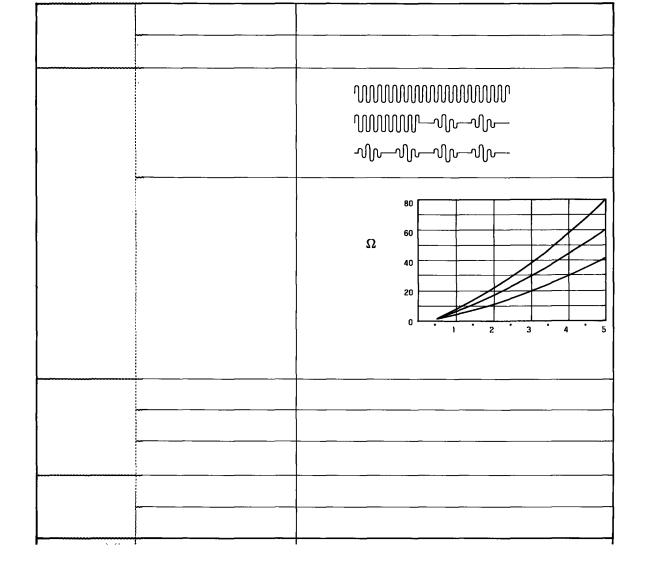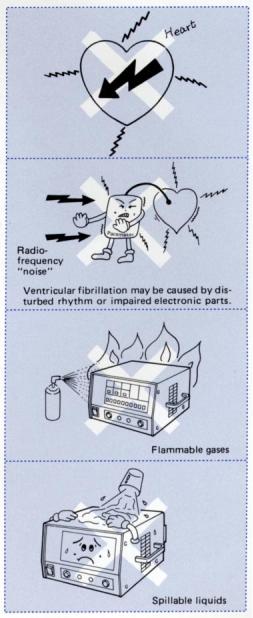Olympus PSD-10 User manual

INSTRUCTIONS
ELECTROSURGICAL UNIT
WARNING
The user of this equipment should be thoroughly trained in the applicable procedure. Furthermore, failure to read and thoroughly understand the contents of this instruction
manual may result in serious injury to |
the patient and/or user. It is essential to follow |
the instructions contained in this and |
other manuals which pertain to any equipment |
and accessories used in conjunction |
with this equipment. Possible injuries related |
to endoscopic procedures may include electric shock, explosion, burns, perforation, hemorrhage, etc.
Failure |
to follow these instructions may also result in damage to and/or malfunction |
of this |
equipment. |
CAUTION
Federal (USA) law restricts this device to sale by or on the order of a physician.
Non-Controlled Document
I M P O R T A N T
The Olympus Electrosurgical Unit PSD-10 has been designed for endoscopic electrosurgery (coagulation, polypectomy, sphincterotomy, etc.) in conjunction with Olympus fiberscopes that are applicable to electrosurgery, Olympus electrosurgical accessories and light sources. Do not use the equipment for any purpose other than its intended use.
Please read this entire manual carefully before using the equipment in order to acquaint yourself with the proper care and handling of your new electrosurgical unit. Then prepare and inspect the equipment following these instructions.
Safety precautions must be exercised when handling electrical equipment to prevent operator/ patient shock, fire hazard and equipment damage.
If you have any questions concerning the material contained in this manual or concerning the operation or safety of the equipment, please contact your Olympus representative or the nearest Olympus Service Center.
Non-Controlled Document

CONTENTS
1 |
FEATURES AND MAIN SPEClFlCATlONS |
1 |
||
|
1-1 |
Features |
|
1 |
|
1 - 2 |
Main Specifications |
2 |
|
|
1 - 3 |
Safety Precautions |
5 |
|
2 |
DESCRIPTION |
OF CONTROLS |
7 |
|
3 |
CONSTRUCTION |
9 |
||
4 |
STANDARD SET |
10 |
||
5 |
PREPARATION FOR USE |
11 |
||
|
5-1 |
Installation of PSD-10 |
11 |
|
|
5 - 2 Connection to AC Power |
11 |
||
|
5 - 3 |
Connection of Footswitch |
12 |
|
|
5 - 4 Connection of S-P Cord |
12 |
||
6 |
INSPECTION |
OF ELECTROSURGICAL SYSTEM |
13 |
|
7 |
ENDOSCOPIC |
ELECTROSURGERY |
17 |
|
|
7-1 Precautions against Patient/Operator Burns |
17 |
||
|
7 - 2 |
Setup of Patient-plate |
18 |
|
|
7 - 3 |
Electrosurgery |
19 |
|
|
7 - 4 |
After Operation |
21 |
|
8 |
CARE AND STORAGE |
22 |
||
|
8-1 |
Care After Use |
22 |
|
|
8 - 2 |
Storage |
|
22 |
9 |
MAINTENANCE |
23 |
||
|
9-1 |
Replacement of Fuse |
23 |
|
|
9 - 2 |
Cleaning |
of Ventilation Grills |
23 |
|
9 - 3 |
Periodic Inspection |
23 |
|
10 |
ELECTROSURGICAL SYSTEM CHART |
24 |
||
Non-Controlled Document
1 FEATURES AND MAIN SPECIFICATIONS
1-1 Features
1.Simplified pre-procedural test, using a Check Lead, of the power output of the PSD-10 alone as well as that of the entire electrosurgical system includ-
ing the endoscope and endoscopic electrodes. Test results confirmed by TEST “OK” or “FAULT” indicator lights on the front panel.
2.Push-button selection of CUT, COAG or BLEND current. Output power is controlled by a single-pedal footswitch.
3. The connection monitor circuit |
detects loose or inadvertent misconnection |
||
of |
cords or broken wires in the S-P cord |
(Safety cord and Patient cord). |
|
If |
any irregularity is present, |
the monitor |
activates an alarm and inhibits |
output (current is not delivered when the footswitch is depressed) to ensure safety of the procedure.
4.The feedback ratio monitor scans the entire circuit when the footswitch is depressed. If excessive leakage current is present, the output is inhibited to
ensure safety of the procedure.
5.Flat switches and display panel can be easily wiped clean.
6.Compact, lightweight and portable.
Non-Controlled Document

1-2 Main Specifications
Applicable |
field |
Endoscopic electrosurgery |
Applicability |
|
Olympus fiberscopes suitable for electrosurgery |
Compatible |
endoscopes |
|
Waveform |
|
CUT |
|
|
BLEND |
|
|
COAG |
Output
Radio-frequency
Current
Type
Output
Range
Adjustment
Steps
Output (watts)
Max. rated output (Load: 5OO
CUT: 80 W
BLEND: 60W
COAG: 40 W
Output setting Max. open-curcuit output voltage: less than 1800 Vp-p
Flat switches
0.5 – 5.0
10 steps with 0.5 increment from 0.5 to 5.0.
Selection of output current Flat switches (CUT, BLEND or COAG)
Output
Current control |
Footswitch |
Non-Controlled Document

’Monitors
Connection
Classification (Electromedical equipment)
Output check
Connection monitor
•When the Check Lead is connected and the footswitch depressed, either the “OK” or “FAULT” light will come on.
•Checks the PSD-10 or the entire electrosurgical system.
The entire electrosurgical system cannot be tested when using PSD-10 in combination with CD-3U/L or CD-40/L.
Detects defective connections of cords and broken wires in the S-P cord, and activates:
• A warning light (P-cord or S-cord symbol), a warning buzzer, and inhibits output.
Feedback ratio monitor
S-P cord
A-cord
Check lead
Footswitch
Type of protection against electric shock
Degree of protection against electric shock
Degree of protection against explosion
Other
Computes return current/delivered current ratio. If the ratio is less than a preset value, it inhibits output.
Plug-in (PSD-10) and screw-on (P-plate and endoscope)
Plug-in
Plug-in
Screw-on
Class I equipment
Type BF (Body Floating) equipment
The PSD-10 should never be used where there is a risk of flammable gases.
Defibrillator-protected equipment
Non-Controlled Document

Power requirements
O p e r a t i n g
Environment
Ambient temperature
Relative humidity
Atmospheric pressure
Voltage: |
110, 120, 220, 240 V (a.c.) |
Frequency: |
50/60 Hz |
Input: |
4 A (110, 120V), 2A (220, 240V) |
Voltage fluctuation: Within ±10 %
10 – 40°C (50 – 104ºF)
30 – 75%
700 –1060hPa (700 – 1060 mbar)
Dimensions |
290 mm (W) x 162 mm (H) x 300 mm (D) max., |
& Weight |
8 kg or 17.6 lb (PSD-10 main body) |
Non-Controlled Document

1 - 3 S a f e t y P r e c a u t i o n s
 The PSD-10 should be used only in a medical facility under the supervision of a trained physician.
The PSD-10 should be used only in a medical facility under the supervision of a trained physician.
 The PSD-10 is designed (floating) to function integrally with insulated patient attachments (active electrode and patient plate) to prevent operator/patient shock. To prevent shocks which may be caused by leakage current from other apparatus applied to the patient, endoscopes and cameras used with the PSD-10 should not be grounded.
The PSD-10 is designed (floating) to function integrally with insulated patient attachments (active electrode and patient plate) to prevent operator/patient shock. To prevent shocks which may be caused by leakage current from other apparatus applied to the patient, endoscopes and cameras used with the PSD-10 should not be grounded.
 The endoscopist and his assistant should wear rubber handgloves as an added precaution.
The endoscopist and his assistant should wear rubber handgloves as an added precaution.  When using a camera (except the SC16-10) an insulating hood should be attached
When using a camera (except the SC16-10) an insulating hood should be attached
to the camera’s eyepiece.
 The enclosure of the PSD-10 must be grounded securely and effectively. Do not defeat the line cord ground connection.
The enclosure of the PSD-10 must be grounded securely and effectively. Do not defeat the line cord ground connection.
 The PSD-10 should never be applied to the heart directly.
The PSD-10 should never be applied to the heart directly.
 Never install and operate the PSD-10 where there is a risk of flammable gases.
Never install and operate the PSD-10 where there is a risk of flammable gases.
 Should any irregularity or abnormality be suspected during operation, immediately stop the use of instrument and turn OFF the power switch.
Should any irregularity or abnormality be suspected during operation, immediately stop the use of instrument and turn OFF the power switch.
 Keep liquids away from all electrical equipment to prevent operator shock and instrument damage. Do not use the PSD-10 if spilled fluids have entered the unit.
Keep liquids away from all electrical equipment to prevent operator shock and instrument damage. Do not use the PSD-10 if spilled fluids have entered the unit.
 Please investigate the possibility of electronic interference for other electromedical equipment in conjunction with the PSD-10 prior to use.
Please investigate the possibility of electronic interference for other electromedical equipment in conjunction with the PSD-10 prior to use.
 Do not install the patient plate adjacently to an artificial bone (metal), etc.
Do not install the patient plate adjacently to an artificial bone (metal), etc.
Non-Controlled Document

Keep adequately away from cords of electric scalpel (scalpel holder, scalpel cord and patient plate cord), scalpel main body and cords, main body of other electromedical
equipment.
Do not loop cords of electric scalpel (scalpel holder, scalpel cord and patient plate cord). Do not contact these cords with the patient or metallic portion of an operating table, etc.
The PSD-10 should not be used in conjunction with electrical apparatus whose safety
against leakage current is not guaranteed.
Radio-frequency and spark discharge “noise” may adversely affect other electro-medical equipment being used in the proximity.
Do not apply the electric scalpel to the patient who has a pacemaker in his body.
The use of a radio-frequency noise filter in monitor electrode lines may reduce interference.
Patient monitor electrodes must be placed as far away as possible from the operative
field.
Needle type electrodes should not be used as they increase the risk of burns.
To prevent instrument damage, the active electrode and the patient plate should not be short-circuited.
Do not activate the electrode for an extended time when it is not touching the target
tissue.
The PSD-10 should be used in accordance with the operating environment specified in 1 – 2 Main Specifications; otherwise improper performance, compromised safety or
instrument damage may result.
Repairs should be carried out only by an Olympus Service Center.
Non-Controlled Document
